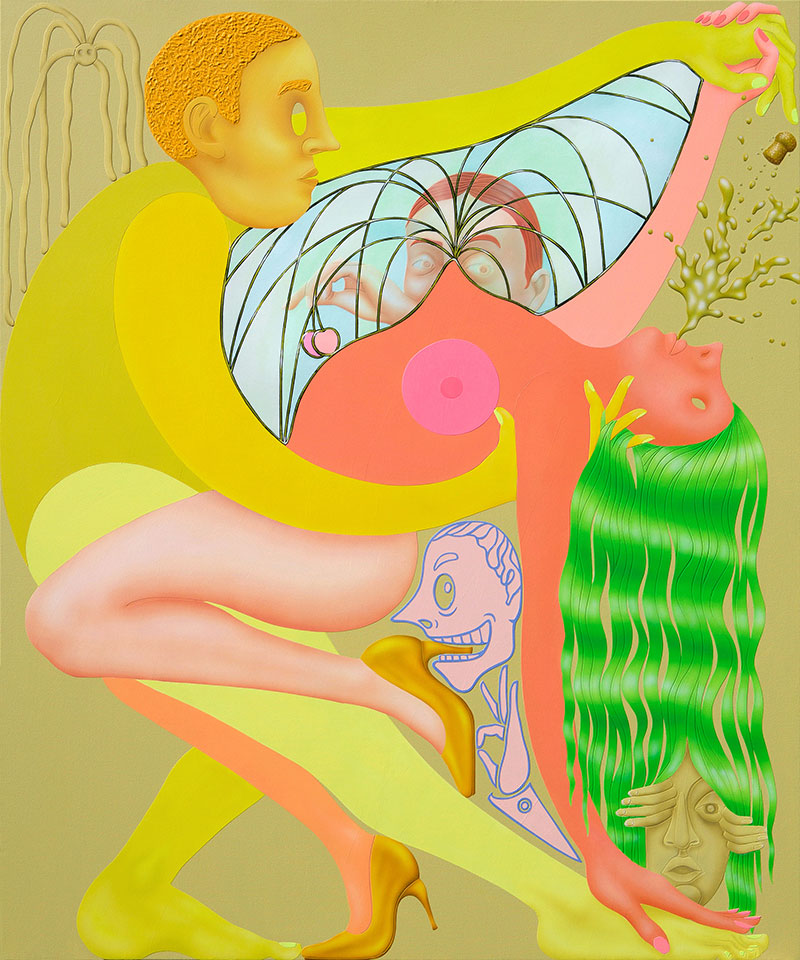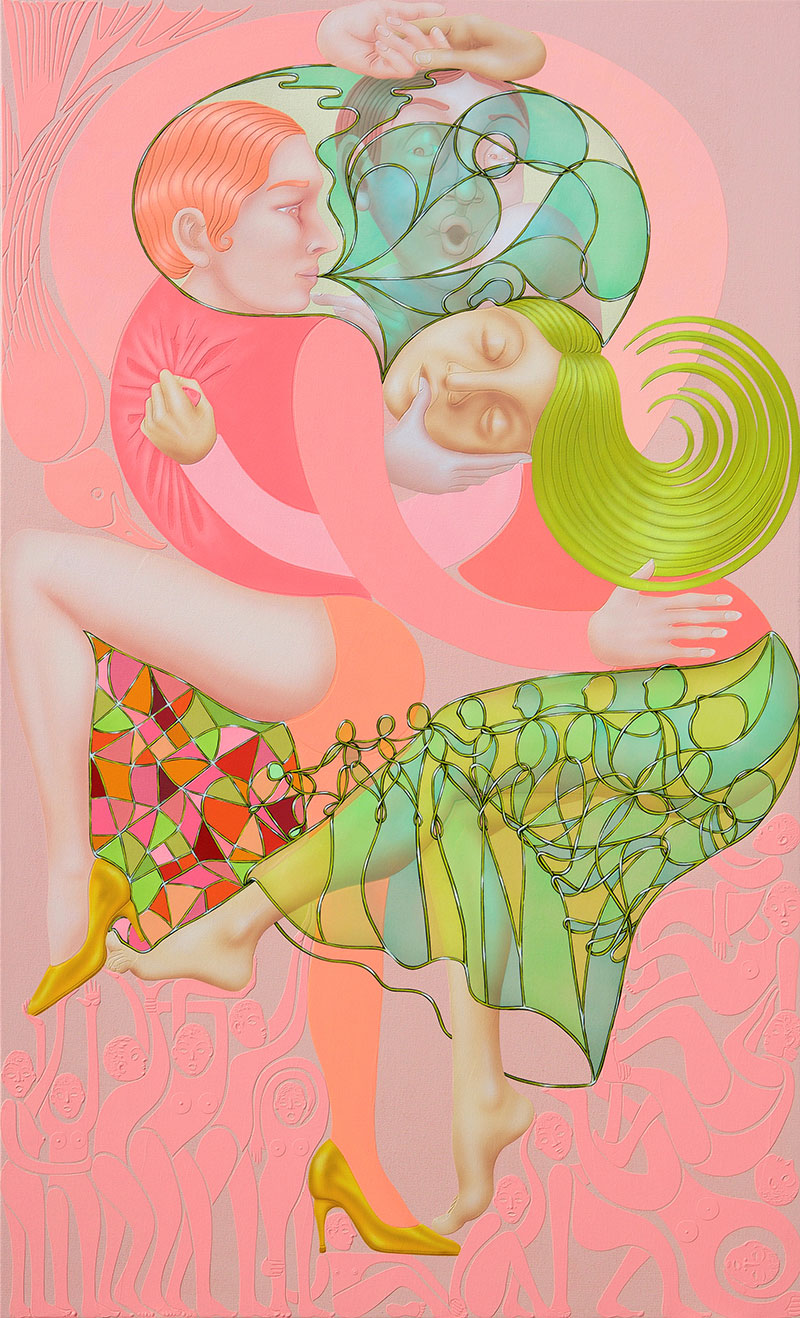Your cart is currently empty!
Wendell Gladstone

“Fever Pitch,” Wendell Gladstone’s new collection of paintings, achieves that elusive characteristic in which the longer you look, the more you see. It may be the bright, cotton candy-colored palette that draws you in, but it’s the details that keep you looking. At the heart of “Fever Pitch” is the movement and dance of lovers. Bodies intertwine and embrace, clinging to each other in the throes of passion—though many of the women in the paintings seem to be losing themselves in euphoria more than the men. It leads me to question, are these works exploring the female orgasm?
In Solid Gold, Daddy Long Legs (2017), a nude woman bends over backwards as her breast and mouth explode like bottles of champagne—cork included to ensure the metaphor is clear. Meanwhile, in You Can Go Home Again (2017), a woman closes her eyes in bliss as a man’s hand sensually enters her mouth; she appears lost in ecstasy as her shoe slips off her foot.
Gladstone’s images of falling women being held up by unmoving, stoic men seem firmly rooted in male fantasy. The women seem to lack agency, and appear more like passive objects than active participants. Because Gladstone’s work is so rooted in the subconscious, it may be that the heteronormative, classic power structure of strong objective male, weak subjective female is less representative of the artist’s views, and is more an indication of thought patterns of our society as a whole.

Then, there is the more sinister narrative afoot in the paintings. In both of the aforementioned works (along with others in the show), there are often one or multiple onlookers with menacing expressions. These (always male) voyeurs cast an uneasy shadow and impart a sense of dread that creates dynamism within the otherwise dreamy and pleasant paintings. This contributes to the fantasy aspect as well, as this added element often creates a scene where a woman lost in ecstasy is surrounded by a group of male onlookers.
These symbolic allegories breathe life and interest into the paintings, and they are facilitated by Gladwell’s meticulous touch. For instance, he uses clear medium mixed with thin tints of paint to create a stained glass effect that he layers over parts of the compositions. On the bottom section of many of the paintings, smaller bodies intertwine, move, and dance. Much like the stained glass effect, these figures are rooted in technique. Gladstone creates them by building up thick layers of paint, and then carving them out with an X-Acto knife. Using this carving technique throughout his paintings, Gladstone builds up depth that is greatly contrasted by the smooth surfaces of his airbrushed figures.
Gladstone’s work has historically suffered from trying to do too much in too little space. In this collection the artist has focused on slowing down and telling a story. He has honed his techniques and by using them consistently has achieved a calculated show that, though most likely divisive, is a display of an artist has finally caught his stride.Los Angeles